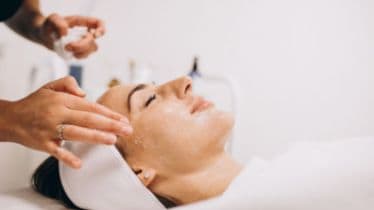When it comes to skincare, one size doesn’t fit all. What your skin needs in your teenage years is very different from what it requires in your 30s or 50s. That’s because your skin keeps changing with age and factors like hormones, lifestyle, and even the weather play a big role in how healthy it looks and feels.
Doctors point out that your skin keeps changing as you grow. What works in your teens won’t always work in your 30s or 50s. In your teens, your skin is battling oiliness and breakouts. By your 20s, it’s at its healthiest but vulnerable to long-term damage from sun and pollution. In your 30s, the first fine lines and uneven tone appear, while the 40s bring hormonal shifts and dryness. By the 50s, skin becomes thinner, more fragile, and shows visible signs of ageing such as sagging and pigmentation.
A 2018 study in the Dermato-Endocrinology Journal explained that with age, skin loses collagen, the protein that keeps it plump and firm, at about 1 per cent every year after your 20s. Another 2019 review in the Journal of Clinical and Aesthetic Dermatology explained that changes in hormones, especially estrogen, have a major impact on skin hydration, elasticity, and thickness in women as they move into their 40s and 50s.
That’s why dermatologists say your skincare routine can’t stay the same forever and it needs to change as you grow. “Just like you wouldn’t wear the same clothes or eat the same diet at 50 that you did at 15, your skincare also has to evolve. What worked in your teens may be too harsh or ineffective later on,” says Dr. Khushboo Jha, MBBS, MD, Chief Dermatologist Consultant at Metro hospital.
So how do you care for your skin at every stage of life?
Dr. Jha shares a dermatologist-approved age-by-age skincare guide you must follow:
Teen years (13–19): Balance and Prevention
Hormonal changes during puberty often lead to breakouts and oily skin. Hence, Dr Jha advises one must not overdo their skincare routine. “Teenagers should use a gentle foam-based cleanser and a lightweight, oil-free moisturizer. Sunscreen is non-negotiable, no matter what age you are,” explains Dr. Jha.
She also warns against overwashing. “When you wash your face too frequently, the skin compensates by producing more oil, which can worsen acne.” she said.
If pimples persist despite basic care, a dermatologist may recommend treatments like retinoids or salicylic acid.
20s: Protection and repair
In your 20s, skin is at its healthiest, but bad habits like late nights, stress, or skipping sunscreen can cause long-term damage. “Your 20s are the decade to protect your skin. Stick to basics, gentle cleanser, non-comedogenic moisturiser, and sunscreen every day. At night, you can add mild exfoliants like AHAs or BHAs,” says Dr. Jha. If you wear makeup, double cleansing is a must to prevent clogged pores.
30s: Hydration and early anti-ageing
This is the age when collagen, the protein that keeps skin firm, starts declining. Fine lines and dullness may also start showing. “Adding retinol in your nighttime skincare routine is a game-changer in your 30s. If your skin is sensitive, you can try bakuchiol, which is a gentler alternative,” recommends Dr. Jha.
Moisturisers with ceramides or hyaluronic acid can lock in hydration. Eye creams with peptides or caffeine help reduce puffiness and wrinkles around the eyes.
40s: Firmness and brightening
By the 40s, signs of ageing such as loss of elasticity, deeper wrinkles, and uneven skin tone become more visible. “At this stage, you need a rich moisturiser with antioxidants like niacinamide or peptides. Retinoids, if tolerated, can help maintain skin texture,” says Dr. Jha.
“Depending on your skin, dermatological treatments like microneedling or laser resurfacing may also be suggested to restore firmness and improve brightness,” she further explains.
50s and Beyond: Nourishment and barrier protection
The post-menopause years bring a significant drop in estrogen levels, leading to dry, thin, and more sensitive skin. “This is the age to focus on strengthening your skin barrier. Use rich creams with ingredients like squalane or ceramides. Products with growth factors or exosomes can also help remodel collagen,” explains Dr. Jha. And yes, sunscreen continues to remain the main product even in your 50s and beyond.
Skincare is never one-size-fits-all. While gentle cleansing, hydration, and sunscreen remain constant at all ages, the products and ingredients you use should change with your skin’s changing needs.
“As dermatologists, we try prevention, but also realistic care. Ageing is natural, but the right skincare at the right time can help your skin stay healthier for longer,” says Dr. Jha.
So whether you’re a teen dealing with acne or in your 50s focusing on nourishment, remember, your skin deserves age-appropriate care and professional guidance when needed.
